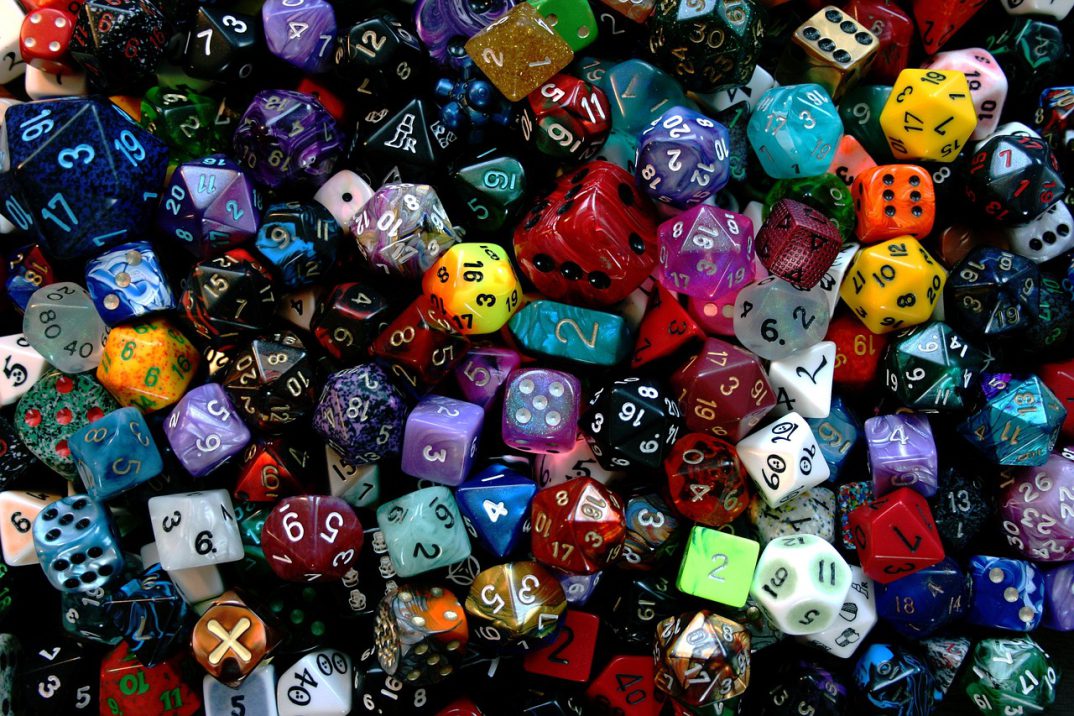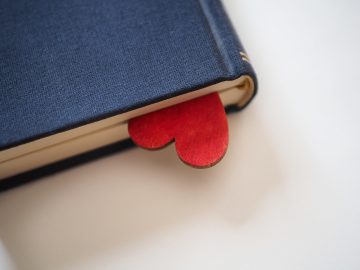Introduction
Alright, let’s set the stage – because what I’m about to introduce is both wildly creative and surprisingly lucrative. You’ve seen traditional dice with dots or numbers, but what if those dice sparked entire stories instead of just adding up points? Enter Story Dice, a playful yet practical tool that transforms a roll of the dice into a world of imaginative possibilities.
Story dice are cubes printed with simple icons – things like a spaceship, a treasure chest, or a thundercloud. When rolled, they prompt players to weave those images into a tale. But here’s the real kicker: you don’t just have to imagine using them. You can create them. That’s right – you can design your own story dice sets and sell them to writers, educators, parents, and anyone else who loves a bit of off-screen creativity. From sparking a child’s bedtime stories to helping a stuck novelist find their next plot twist, story dice offer endless opportunities to blend creativity and commerce.
This isn’t just about selling small cubes with pictures. It’s about crafting an experience. Story dice sets can be themed – “Fairy Tale Adventures,” “Outer Space Explorers,” or “Spooky Campfire Tales” – and each roll turns into a prompt, a game, or a stepping stone for the imagination. The appeal crosses age groups and interests, making it a versatile niche. Educators use them to teach storytelling, parents use them for family game nights, and authors use them to beat writer’s block.
And here’s why it’s a business worth rolling into: they’re affordable to produce, compact to ship, and a joy to design. With just a few blank dice, some creative illustrations, and clever packaging, you can create a product that’s as charming as it is practical. Plus, you’ll find an eager audience in Etsy shoppers, homeschool parents, and indie game enthusiasts who are constantly looking for fresh, handmade alternatives to store-bought games. So, let’s get rolling – because your creativity is about to become your next success story.
How to Get Started
First, let’s talk themes. Themed sets sell better because they resonate with specific audiences. A generic set of story dice is nice, but a themed set – like “Fantasy Adventures” or “Mystery Solvers” – captures the imagination right away. Your first step is choosing a theme that excites you and has visual appeal. Think about who you want to sell to and what kind of images will inspire them to create stories. Fantasy-loving kids might adore dragons, castles, and magical wands. Adults looking for writing inspiration might gravitate toward sci-fi gadgets, noir-style detectives, or steampunk contraptions.
Next, start sketching your icons. Keep them simple and bold – story dice work best when the images are instantly recognizable. Imagine rolling the dice, glancing at a symbol, and knowing immediately what it represents. Icons should be straightforward: a crown for royalty, a lightning bolt for conflict, a key for mystery. If you’re not a natural illustrator, don’t worry. Tools like Canva Pro or Procreate can help you create clean, professional-looking designs. Just remember, the simpler, the better. You’re not creating detailed artwork; you’re creating visual cues that spark ideas.
Once you have your designs, decide how you’ll apply them to the dice. Many creators start with blank wooden cubes and use stickers or decals for the designs. This approach is budget-friendly, beginner-friendly, and lets you test different ideas quickly. As you grow, you might consider investing in engraved dice or custom-printed cubes, which can command a higher price. You’ll also need packaging – something small and convenient, like a drawstring pouch or a mini tin. Make sure to include instructions or a prompt card so buyers know how to use the dice.
Finally, test your first set. Roll them yourself. Share them with a friend or a kid and watch their reaction. Do the icons make sense? Do they lead to interesting stories? Adjust anything that feels unclear, then get ready to start selling. Once you have a polished product, it’s time to list it on Etsy, promote it on Instagram, and watch your story dice become a go-to creativity tool for storytellers everywhere.
Tools/Resources Needed
Blank Wooden Dice
The foundation of your product. Blank wooden dice are affordable, durable, and easy to customize. They provide the perfect canvas for your designs, and their smooth surface ensures stickers, decals, or engraved images adhere well. Plus, the tactile feel of wooden dice makes them extra satisfying to roll, which customers will appreciate.
Procreate or Canva Pro
These tools are your creative playground. Procreate lets you draw precise, clean icons with a digital pen, while Canva Pro offers ready-made templates, fonts, and shapes that simplify the design process. Even if you’re not an artist, Canva’s drag-and-drop interface helps you create professional-quality icons that look great on a small scale. Both tools give you control over your designs and allow you to quickly iterate until you find the perfect look.
Sticker Printer or Cricut Machine
If you’re starting with stickers, a high-quality sticker printer or a Cricut cutting machine will save you loads of time. These devices let you print and cut multiple designs at once, ensuring consistency and precision. They also give you the flexibility to experiment with different materials, like clear vinyl or matte paper, to see what makes your icons pop on the dice.
Mini Dice Pouch or Tin Packaging
Packaging is more than just a container – it’s part of the experience. A cute fabric pouch, a small tin, or even a decorative cardboard box adds perceived value to your product. Customers love opening something that feels special, and great packaging can set your story dice apart from competitors.
Etsy Seller Account
Etsy is the perfect platform for selling handmade, creative goods. With a built-in audience of craft-loving shoppers, Etsy helps you reach people who value unique, handmade items. Listing on Etsy also allows you to tap into the site’s SEO features, making it easier for your dice sets to appear in searches for storytelling games, writing prompts, and educational tools.
Your 10 Step Action Plan
Choose a Clear, Marketable Theme
Your theme is your calling card!
It’s the first thing buyers will see and the anchor for their storytelling experience. A “Fantasy Quest” set might include knights, dragons, treasure chests, and magical wands. A “Space Exploration” set could feature rockets, alien planets, astronauts, and shooting stars.
Whatever theme you pick, make sure it’s visually rich and immediately inspiring. Test out several concepts by sketching a few sample icons and showing them to friends or potential customers. Ask questions like: “Does this theme excite you?” “Could you imagine rolling these and coming up with a cool story?” Choose a theme that consistently gets people excited and curious.
Sketch and Refine 6–12 Simple, Bold Icons
Icons are the heart of your product.
They should be clear enough that someone can glance at them and instantly know what they represent. Keep the designs bold, simple, and recognizable. If you’re creating a nature-themed set, a single tree silhouette, a mountain range, a sun, or a river should be easy to distinguish. Too much detail can make the icon look muddy or confusing when printed small.
Start by hand-drawing rough ideas, then refine them digitally. Test each design by printing it on paper and cutting it out. Place these on your dice to see if they’re legible at a glance. Adjust line thickness, simplify complex shapes, and ensure every image is intuitive. A good icon doesn’t just look pretty – it immediately sparks an idea.
Decide on Your Dice Production Method
Your choice of production method can impact cost, time, and scalability.
Start with a straightforward approach like using high-quality stickers that you apply to blank wooden dice. This allows you to refine your designs and product lineup without a massive upfront investment.
As you grow, you can consider direct printing or engraving for a more polished, durable product. Investigate local printers, online suppliers, and DIY tools like Cricut machines. Make small test runs to gauge customer interest. If a particular theme or design set sells well, reinvest in higher-quality production methods that allow you to charge more or offer premium versions.
Create a Play Guide or Prompt Card
A great product doesn’t just include the dice – it comes with clear instructions that show buyers how to use them.
Your play guide could be as simple as a printed card that fits in the package, outlining a few ways to play. For example, “Roll three dice, then create a short story using all three images” or “Use one die per paragraph to guide your writing.” Include variations for different age groups: kids might enjoy making up silly bedtime stories, while adults can use the dice for writing challenges or improv games.
A well-thought-out play guide makes your product feel polished, professional, and worth the price.
Package Your Dice in an Appealing Way
Presentation matters.
While your dice are the main attraction, how you package them sets the tone. A small, colorful drawstring pouch with your logo adds a touch of professionalism. A printed box with a clear window allows customers to see the product inside, which can increase impulse purchases.
If you’re using tins, consider adding an embossed or printed label on the lid. Well-designed packaging protects the dice, ensures everything stays together, and creates a delightful unboxing experience. Plus, attractive packaging makes your product more giftable, appealing to holiday shoppers and birthday buyers.
Take Engaging Product Photos
High-quality photos are crucial for online sales.
Use natural lighting and a clean background to make your dice pop. Take multiple angles: a flat lay of all the dice, a close-up of the icons, and a shot of someone rolling the dice onto a piece of paper or a tabletop.
Use props that complement your theme – fantasy books, notebooks, or a small figurine of a wizard if you’re selling a fantasy set. Highlight the details, but also show the whole set together. The goal is to help potential customers imagine themselves using the product.
List Your Product on Etsy with Optimized Keywords
Etsy’s marketplace thrives on descriptive, keyword-rich titles and tags.
Don’t just say “Story Dice.” Be specific: “Fantasy Storytelling Dice for Kids – Creative Writing Tool.” Use tags that reflect your theme and audience: “creative writing dice,” “kids storytelling game,” “writers block tool,” and “imaginative play set.”
Add a compelling description that highlights how the dice spark creativity, how they can be used in different ways, and why they make the perfect gift for writers, kids, or teachers. The more relevant keywords you include, the easier it is for the right customers to find you.
Market Your Dice on Social Media
Start with platforms where visual content shines – Instagram, TikTok, and Pinterest.
Post short videos of you rolling the dice and coming up with a quick story idea. Share behind-the-scenes content, like sketching icons or packaging dice. Create simple writing prompts using the dice and post them as challenges for your followers.
Engage with storytelling communities, writing groups, and homeschool hashtags. The more you show how fun and versatile the dice are, the more people will want to try them out for themselves.
Offer Themed Bundles and Gift Sets
Many customers will buy one set, love it, and want more.
Offer themed bundles – two or three sets packaged together at a discount. For example, a “Fantasy and Fairy Tales Bundle” or “Writer’s Starter Pack.” Create limited-edition gift sets with holiday-themed dice, festive packaging, and an included gift tag.
Bundles not only increase your average order value but also make it easy for shoppers to grab ready-made presents for friends and family.
Expand with Seasonal or Niche Editions
Keep things fresh by introducing new sets every few months.
Seasonal dice (winter-themed, summer adventures) and niche themes (steampunk stories, historical fiction prompts) give returning customers a reason to come back. Limited runs create urgency and encourage buyers to snag them before they’re gone.
Use feedback from customers to develop sets that fit their interests – if they loved your fantasy set, they might be eager for a follow-up “Epic Quest” expansion pack.
How to Make Money in This Niche
Sell on Etsy or Shopify
Start with a storefront that’s easy to manage and where customers already shop for handmade goods. Etsy is ideal because of its built-in audience, user-friendly interface, and robust search engine. With descriptive listings, you can attract buyers looking for writing prompts, storytelling games, or unique educational tools.
Once you gain traction, consider adding Shopify or a personal website for higher control, branding opportunities, and direct customer communication. Having multiple sales channels increases visibility and sales potential.
Offer Digital Download Versions
For customers who prefer instant gratification or live outside your shipping area, digital downloads are a game-changer. Sell printable PDF templates of your dice designs that buyers can print at home.
This gives you a completely hands-off revenue stream – no materials, no packaging, and no shipping required. Just upload your files and let customers handle the rest. It’s pure profit, and the demand for affordable, DIY-friendly options continues to grow.
Create Classroom Packs for Educators
Teachers are always looking for engaging tools to make lessons more interactive. Offer bulk sets at a discount or create “classroom packs” that include multiple dice sets, printable worksheets, and a guide on how to use them in group activities.
Market them to schools, homeschool co-ops, and educational conferences. By positioning your product as both fun and educational, you tap into a reliable and often recurring customer base.
Collaborate with Writers and Content Creators
Partner with authors, bloggers, and YouTubers who can feature your story dice in their content. Send them sample sets to review or use in their own storytelling challenges.
A writer’s group might use the dice for a collaborative story exercise, while a BookTuber could demo them as a fun writing prompt tool. These collaborations help you reach new audiences and establish credibility within creative communities.
Expand Into Subscription Services or Monthly Clubs
Subscription boxes are booming. Create a monthly dice club where members receive a new themed set or exclusive icon designs every month. Include small extras like story prompts, limited-edition icons, or downloadable guides.
Subscription models provide consistent income, build customer loyalty, and make your product feel like an ongoing experience rather than a one-time purchase.
Enjoy!






